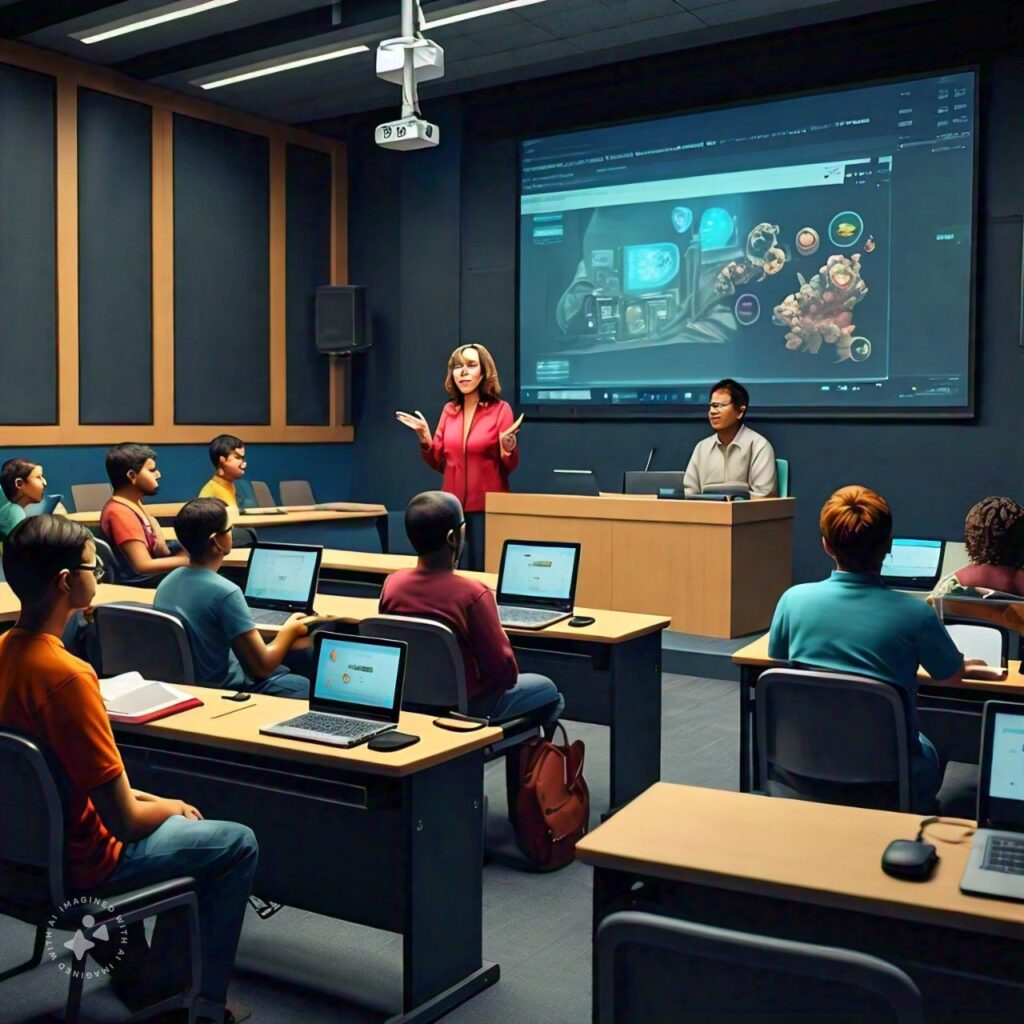The Future of AI in Education: Revolutionizing Learning and Teaching

Artificial Intelligence (AI) is no longer just a concept of the future; it’s a reality transforming various industries, including education. With the rapid advancement of technology, AI has started to play a significant role in how students learn and how teachers teach. From personalized learning experiences to intelligent tutoring systems, the future of AI in education is both exciting and promising. In this blog post, we’ll explore how AI is shaping the educational landscape and what the future holds for AI-driven education.

1. Personalized Learning: A Tailored Approach
One of the most impactful ways AI is revolutionizing education is through personalized learning. Traditional classroom settings often adopt a one-size-fits-all approach, which may not cater to the unique needs of every student. AI, however, can analyze individual learning patterns, preferences, and progress to offer a tailored educational experience.
By using AI-powered platforms, students can receive custom study plans, targeted feedback, and real-time recommendations. AI tools can identify areas where a student struggles and adjust the content or suggest additional resources. This approach not only helps improve learning outcomes but also boosts student confidence and engagement.
2. Intelligent Tutoring Systems: On-Demand Assistance
AI-driven tutoring systems are another major innovation in the field of education. These systems act as personal tutors, available 24/7 to help students understand complex topics. They provide step-by-step explanations, answer questions, and offer practice exercises, all tailored to the individual learner’s needs.
AI tutoring systems, like those seen in AI-powered apps, simulate the experience of a one-on-one session with a tutor. What’s more, they can handle multiple subjects at once, making them a versatile tool for students. As the demand for affordable, flexible learning options grows, intelligent tutoring systems will likely become a staple in the educational sector.
3. Automating Administrative Tasks for Teachers
The future of AI in education is not just limited to enhancing student experiences; it also holds great potential for easing the administrative burdens of teachers. Grading assignments, managing class schedules, and tracking student performance can be time-consuming tasks. AI can automate these processes, allowing teachers to focus more on what truly matters — teaching.
AI-based systems can efficiently grade essays, quizzes, and other assignments, providing instant feedback to students. Moreover, AI tools can help teachers track the progress of each student, identifying those who may need extra support. This automation not only saves time but also enables a more data-driven approach to teaching.
4. AI-Powered Learning Analytics
Learning analytics powered by AI offers deep insights into student behavior, performance, and learning patterns. By collecting and analyzing vast amounts of data, AI can predict outcomes, identify knowledge gaps, and suggest interventions to help students succeed.
For educational institutions, AI-driven analytics can be used to assess the effectiveness of curriculums and teaching methods. This allows schools and colleges to continuously optimize their programs based on real-time data. As AI continues to advance, the scope of learning analytics will grow, offering even more detailed insights into the learning process.
5. Enhanced Accessibility and Inclusion
AI technology is making education more accessible to students with disabilities. Tools like AI-powered speech recognition, text-to-speech, and real-time captioning systems can aid students with hearing or visual impairments. AI can also translate text into different languages, making educational content available to students across the globe, regardless of their native language.
The future of AI in education promises a more inclusive learning environment where every student, regardless of their physical abilities or geographical location, can access quality education.
6. Virtual Classrooms and AI in Remote Learning
The global pandemic has accelerated the adoption of remote learning, and AI is playing a crucial role in enhancing the virtual classroom experience. AI-powered platforms enable seamless communication, content delivery, and student assessment in online learning environments. In the future, AI will help create even more interactive and engaging virtual classrooms by integrating features like real-time feedback, adaptive learning, and immersive technologies such as virtual and augmented reality.
With AI at the forefront, remote learning is set to become more dynamic, effective, and accessible to students worldwide.

7. Ethical Concerns and Challenges
While AI offers numerous benefits to the educational sector, it also raises ethical concerns. Issues such as data privacy, algorithmic bias, and the digital divide need to be addressed to ensure that AI is used responsibly in education. Schools and institutions must implement strict data security measures to protect student information and ensure that AI tools are inclusive and fair for all students.
The future of AI in education must include a focus on ethical implementation to avoid exacerbating inequalities or misusing student data.
Conclusion: The Bright Future of AI in Education
AI has already started to transform the educational landscape, and its potential for the future is limitless. From personalized learning experiences to automated administrative tasks, AI is paving the way for a more efficient, inclusive, and engaging educational experience. As technology continues to advance, educators and institutions must stay ahead of the curve by embracing AI and integrating it into their teaching methods.
The future of AI in education is bright, and it holds the promise of making learning more accessible, personalized, and effective for students around the world.






Responses